Did you know that most of the material delivered to Earth from space comes in the form of microscopic “cosmic dust”? These tiny extra-terrestrial particles exist everywhere in the solar system – from small grains in the asteroid belt, to spacedust in the zodiacal cloud (a faint glow that can be seen from Earth at night), and even in the icy rings of Saturn.
A single speck of cosmic dust could record evidence of large-scale astrophysical events like nearby rocky collisions, so how do scientists interrogate these tiny time capsules? In this blog, ESE PhD student, Isabelle S. Mattia explores the wonderous world of space dust further…
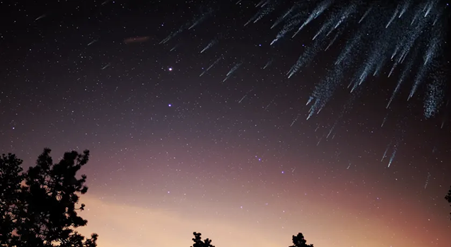
A brief history of their discovery
Micrometeorites are defined as cosmic dust delivered to the Earth’s surface and they can fall virtually anywhere. You may even have a speck on your clothes right now!
They were first described in 1876 by Sir John Murray after collecting spherical, dark, magnetic particles from deep ocean sediments during the four-year (HMS) Challenger expedition – known for making many of the discoveries that laid the foundation of oceanography. Almost 100 years later in the 1960s, Donald Brownlee termed these as “cosmic spherules” – extra-terrestrial grains that had fully melted and cooled during their journey through the atmosphere.
In the 20th century, micrometeorites were being found across the globe, from beaches, to deserts, but more notably in Antarctic ice sheets where somewhat “fresh” (unaltered) spherules were being identified. But the presence of cosmic dust is not limited to just the surface. In fact, in 1964, Thomas Mutch hypothesised that “this same dust has been raining down on the Earth throughout geologic time” which was proven by his discovery of ancient fossil micrometeorites in 420 million years old salt deposits!
Just recently in 2015, cosmic spherules were discovered on urban rooftops by the public, making their collection easier than ever.
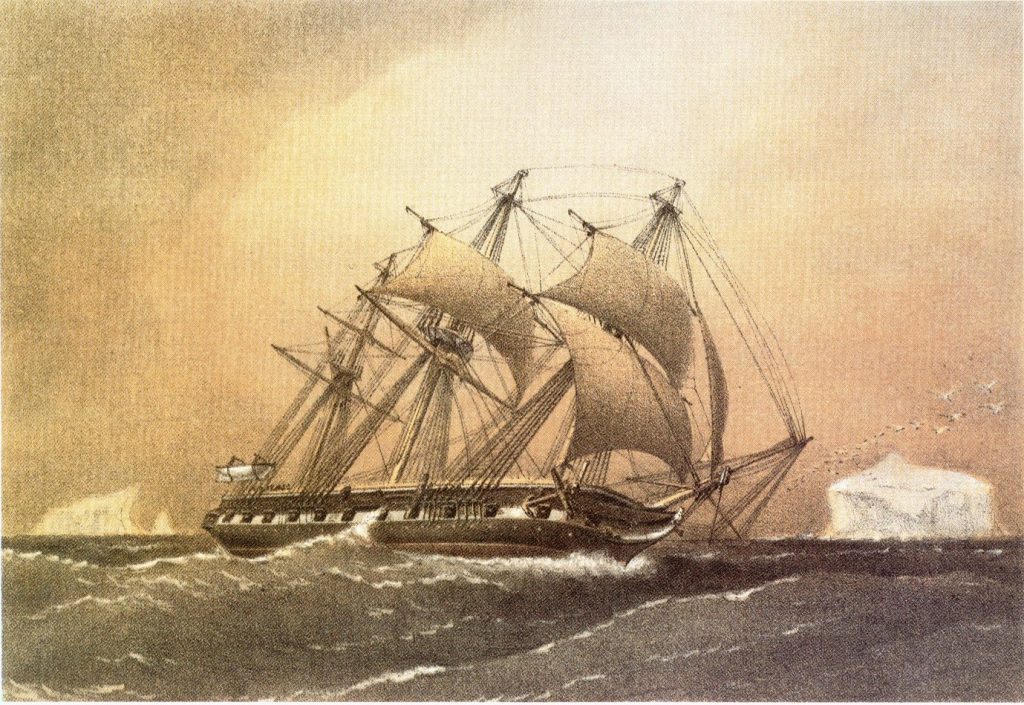
What do they look like?
Cosmic spherules are classically described as being small, dark, shiny, and spherical. They are defined to be less than 2mm in size, but their size distribution peaks at around 0.2mm. Spherules acquired from the deep sea and a type of rock made from compressed layers of sand, mud, and other particles known as sedimentary rocks, are often altered by chemical weathering experienced throughout the years, causing some to lose their smooth shiny surface.
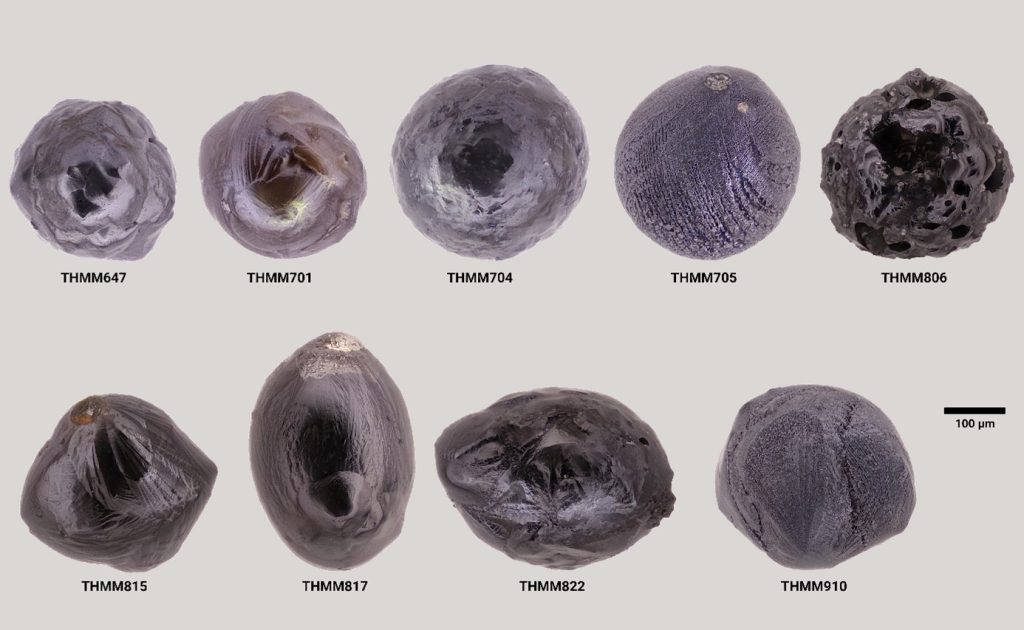
Where do they come from?
As established, cosmic dust can exist almost everywhere in space. For a long time, scientists have been debating where micrometeorites have come from. Most particles are generated during collisions between asteroids, and ablation of dust and gases from comets as they enter the inner solar system. Unfortunately, there isn’t an agreement on how many of these tiny spherical particles come from each category. However, many researchers believe they are likely to originate from carbon-rich stony meteorites called carbonaceous chondrites due to their similar compositions.
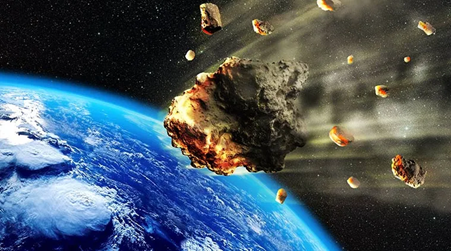
Why are they important?
Besides from being aesthetically gorgeous and fun to hunt for, cosmic spherules play a vital role in helping scientists better understand our planet and solar system processes. Even though each particle doesn’t tell us much on its own due to its size, when we collect and study a high quantity, we can learn a lot about dust-forming bodies like asteroids and comets in the solar system, particularly those not sampled by meteorites.
Micrometeorites have been shown to be rich in essential life-forming elements and organic molecules including amino acids! All organisms on Earth contain these components in their cells, so perhaps our origins venture far out into space and were delivered by these petite particles.
As dust falls to Earth, they undergo heating and react with atmospheric gases. Ancient fossil micrometeorites have thus been passively sampling and tracking the change in our atmosphere’s composition throughout Earth’s history. In fact, they have provided evidence that Earth’s upper atmosphere 2.5 billion years ago was just as oxygen-rich as it is today, going against previous speculations that suggested our early planet did not have much oxygen at all.
We can also understand how much space dust was reaching Earth in the past by estimating the abundance of fossil micrometeorites present in older sedimentary rocks. By identifying their average size, type, and textures found in a single rock layer, we can assume where most of this dust came from in space. Enrichments in fossil dust concentrations have helped support the discovery of the Ordovician break-up event – an asteroid collision which occurred 467 million years ago, and it is responsible for most of the common meteorites being delivered to Earth today!
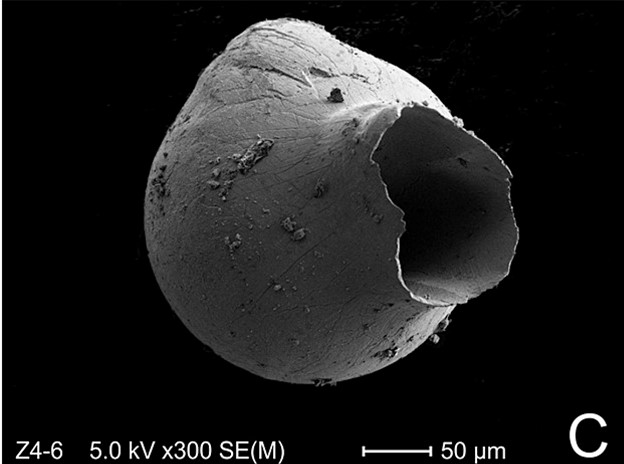
Summary and how to get involved
So, micrometeorites are important tools used by planetary scholars to investigate past solar system events, but are their contributions to science limited to super smart academic research? No, not at all! Remember that cosmic spherules can be found on rooftops, so if you have a long ladder, a flat smooth roof, and broom, you can start hunting for these extra-terrestrial grains yourself!
PhD students Isabelle S. Mattia and Mark Boyd in the Department of Earth Science and Engineering at Imperial are currently tracking down fossil micrometeorites (and other interesting spherical particles) from sedimentary rocks which are millions of years old to help us better understand our solar system. They aim to find hidden impact events and answer some key questions related to the asteroid which killed the dinosaurs 66 million years ago. So maybe next time you see a speck of dust, you can start wondering what extensive hidden history it could be concealing about our universe.
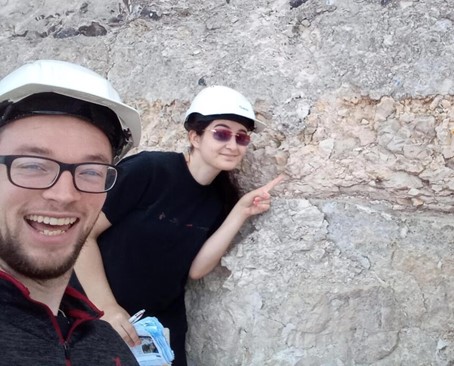
References:
https://ntrs.nasa.gov/citations/19730056617
doi.org/10.1111/j.1749-6632.1965.tb47432.x
https://doi.org/10.1002/gj.2418
doi/10.1111/j.1945-5100.2008.tb00668.x
https://linkinghub.elsevier.com/retrieve/pii/B9780128241622000087
10.1038/nature17678